A Visit to Beirut
AUGUST 2020 UPDATE: THIS post is based on a visit to Beirut that Afaranwide made some time ago, and was written before the blast that devastated the city in August 2020. We offer our condolences to everyone affected, and our hearts go out to all the people of Lebanon.

COLIN SIMPSON
YOU have to feel really sorry for the people of Lebanon. After decades of conflict – including a bloody 15-year civil war – incursions, invasions and assassinations, the country has once more been plunged into turmoil.
This time there’s an economic crisis, with half the population facing poverty after a dramatic fall in the value of the currency, the pound. The coronavirus has made things worse, though there were warning signals before it emerged. Unemployment stood at 25 percent, and the level of debt compared with gross domestic product was the third highest in the world. Political turmoil and street protests late last year led to the resignation of the government. The new government defaulted on foreign debt, a first for Lebanon. And the country ranks poorly in a measure of perceived corruption.
All this is so tragic since, given a fair wind, the capital Beirut could again be one of the world’s most glamorous and attractive cities, as it was in its 1960s jet-set heyday. Ironically, given that Lebanon is currently peering over an economic abyss, it was known back then as the Switzerland of the Middle East because of its financial clout.
In the intervening years there have been a few times when it looked as if it was on the up again, but sadly they all turned out to be false dawns. In another bitter irony – in view of recent events – Beirut features in the Rough Guide to the 100 Best Places on Earth 2020.
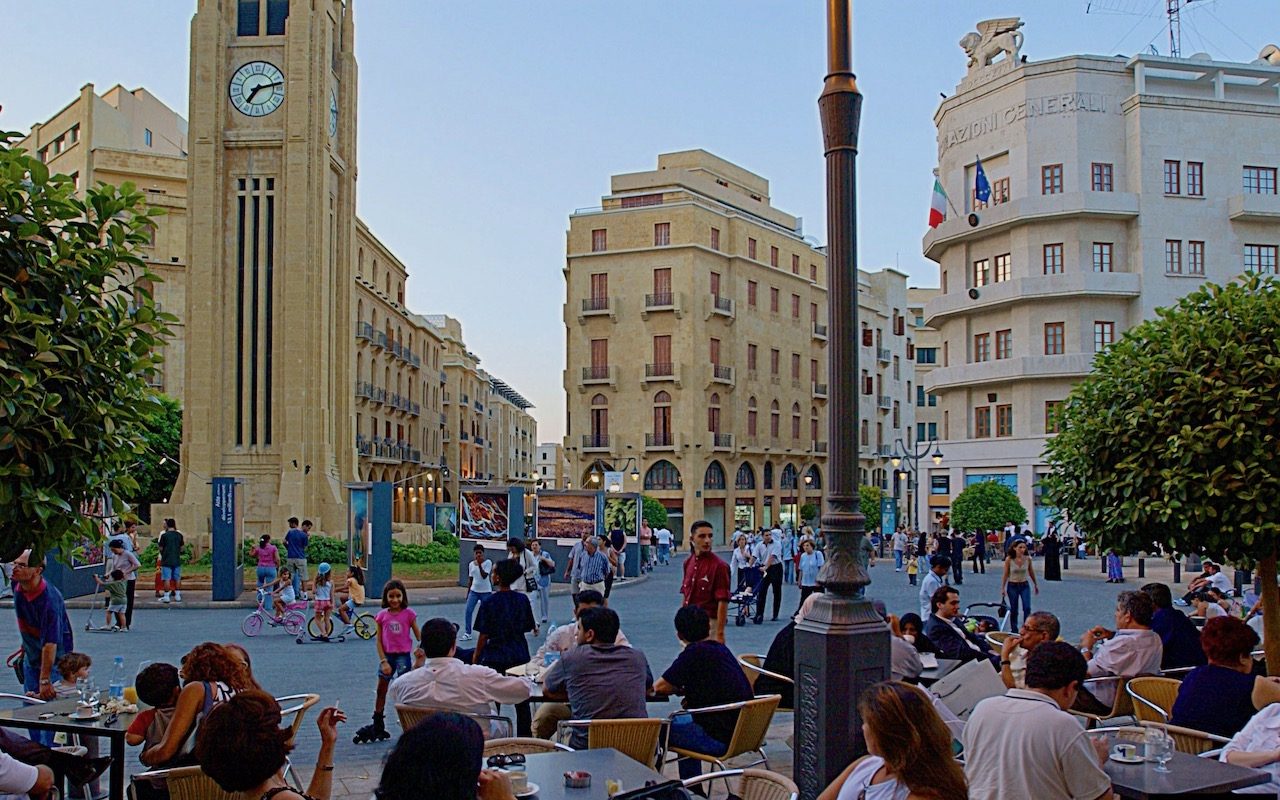
A while ago we visited Beirut during one of the more optimistic periods. And while there were constant reminders of the violent and tragic past, we were entranced by the city and its resilient, upbeat people.
We went there as guests of Le Gray hotel, itself a symbol of the hopeful mood that prevailed at the time. The swish boutique hotel in the Beirut Central District had been opened by a British businessman who already ran swanky properties in central London and Antigua. Given everything that Beirut had been through, the investment seemed a remarkable leap of faith.
The hotel was discreetly luxurious and tastefully decorated, with lots of art hanging from the walls. There were fabulous views across the city from the sides of the rooftop infinity pool.
We saw further signs of urban renewal as we walked around the downtown area, the heart of a massive restoration scheme being carried out by the Solidere company. Ottoman and art deco buildings that were devastated during the civil war had been brought back to life, and grand new properties were being developed. Continuing concerns about Lebanon’s stability meant security was tight.
Attractions in downtown include restored Roman baths and the Mohammed Al Amin Mosque – like the Blue Mosque in Istanbul, only smaller.
Reminders of the troubled past were everywhere. There were bullets holes in walls, shell-blasted buildings, and a statue near the spot where former prime minister Rafic Hariri (the driving force behind the Solidere rejuvenation) was assassinated in 2005.
One striking relic of the turbulent past was a statue in Martyrs’ Square, built as a memorial to nationalists who were massacred during the First World War.
The statue was riddled with bullets during the civil war and an arm of one of the figures was blown off, and it had been left in this state as a reminder of the conflict.
Another grim reminder was the looming, empty ruin of the Holiday Inn, a focus of intensive fighting in both the civil war and the 1982 Lebanon War. Massive blast-holes scarred its walls. An unfinished cinema complex known as the Egg or the Dome is another relic from the war years.
We wanted to find out more about Lebanon’s earlier history, so we stopped off at the National Museum. It’s packed with expertly presented artefacts dating back thousands of years. I particularly liked the Roman exhibits from the port city of Byblos – a superbly crafted statue of a figure in armour from the time of the Emperor Hadrian, for example, and two sarcophaguses that are plain apart from carved likenesses of the original occupants’ heads and faces.
After our dose of culture we wanted to take a break. Cafés in stylish Place de l’Etoile are great for sitting with a coffee and watching the city’s impeccably dressed and groomed residents go by. And there are numerous good-to-great restaurants.
If you fancy a spot of shopping, then there are a number of malls to choose from. We particularly liked the sprawling Beirut Souks development, which made a nice change from the usual malls you find across the Middle East. You walk from shop to shop outdoors rather than in an air-conditioned cocoon.
For a complete contrast to the chain stores in the Beirut Souks and elsewhere, we took a short taxi ride to Saifi Village, an area known for its one-off fashion stores, shoe shops and chic art galleries.
Downtown is impressive but some feel it’s a bit over-sanitised. So for a taste of the “real” Beirut, we headed away from the spruced-up centre and stroll through ordinary streets to see how the people of Beirut lived.
We first visited the east of the city, and then in West Beirut we dived into the backstreets and strolled through the university districts of Hamra and Ras Beirut. Later we enjoyed a promenade along the Corniche – a favourite pastime of the locals – and rounded things off with another coffee, this time at the cliff-top Bay Rock Café overlooking Pigeon Rocks. These two monumental rocks jut up from the sea and erosion has turned one of them into an arch.
Beirut is famous for its nightlife, and one of several hot destinations is Rue Gouraud in the Gemmayzeh district. This long street leads away from Downtown and is lined with attractively aged buildings that provide an appealing contrast to those in the pristine rebuilt centre.
By day, Rue Gouraud is quiet and has the air of a place that’s sleeping off a particularly heavy night, with few signs of activity other than some cafés and shops.
But after dark it springs into life, transforming itself into party central as a host of restaurants and nightspots throw open their doors. The action starts to get going after 9pm.
Our overwhelming impression was that Beirut, despite everything, was a place determined to get on with life. Let’s hope it soon overcomes its current challenges.
As for Le Gray, it underwent a major refurbishment in 2017, eight years after it opened. It now has an exhibition venue, 52-seat cinema, new lobby lounge, 16 extra guest rooms and business and events facilities.
The hotel, which has won a raft of awards and is listed as one of the top 25 hotels in the Middle East, has stayed open during the coronavirus crisis but closed its doors in February this year when protests flared around a confidence hearing into the newly-formed government. Le Gray is in Martyrs’ Square where the protest was staged.
Additional reporting by Sue Brattle.
Top photo: Beirut at night (supplied).
April 2020
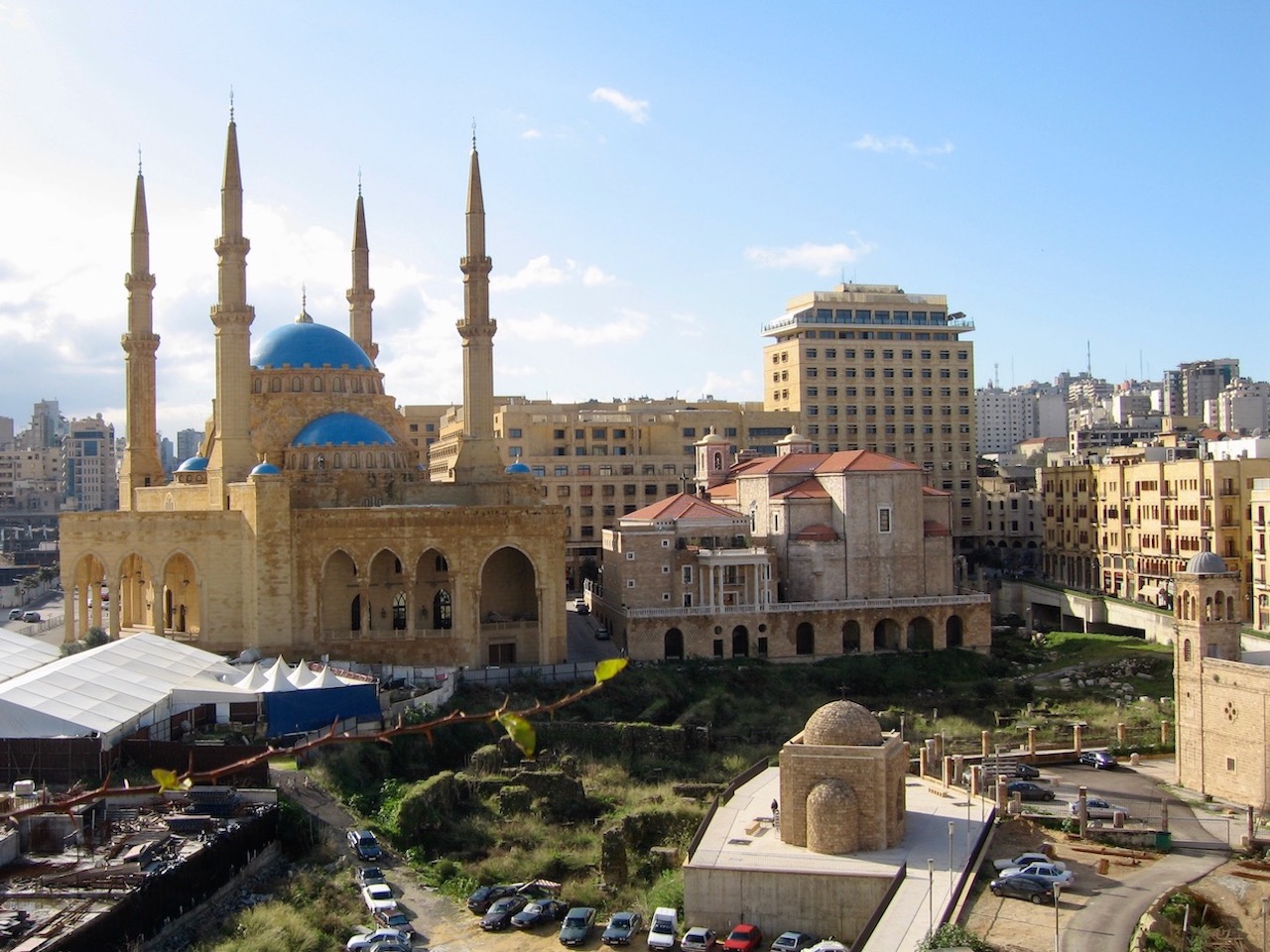


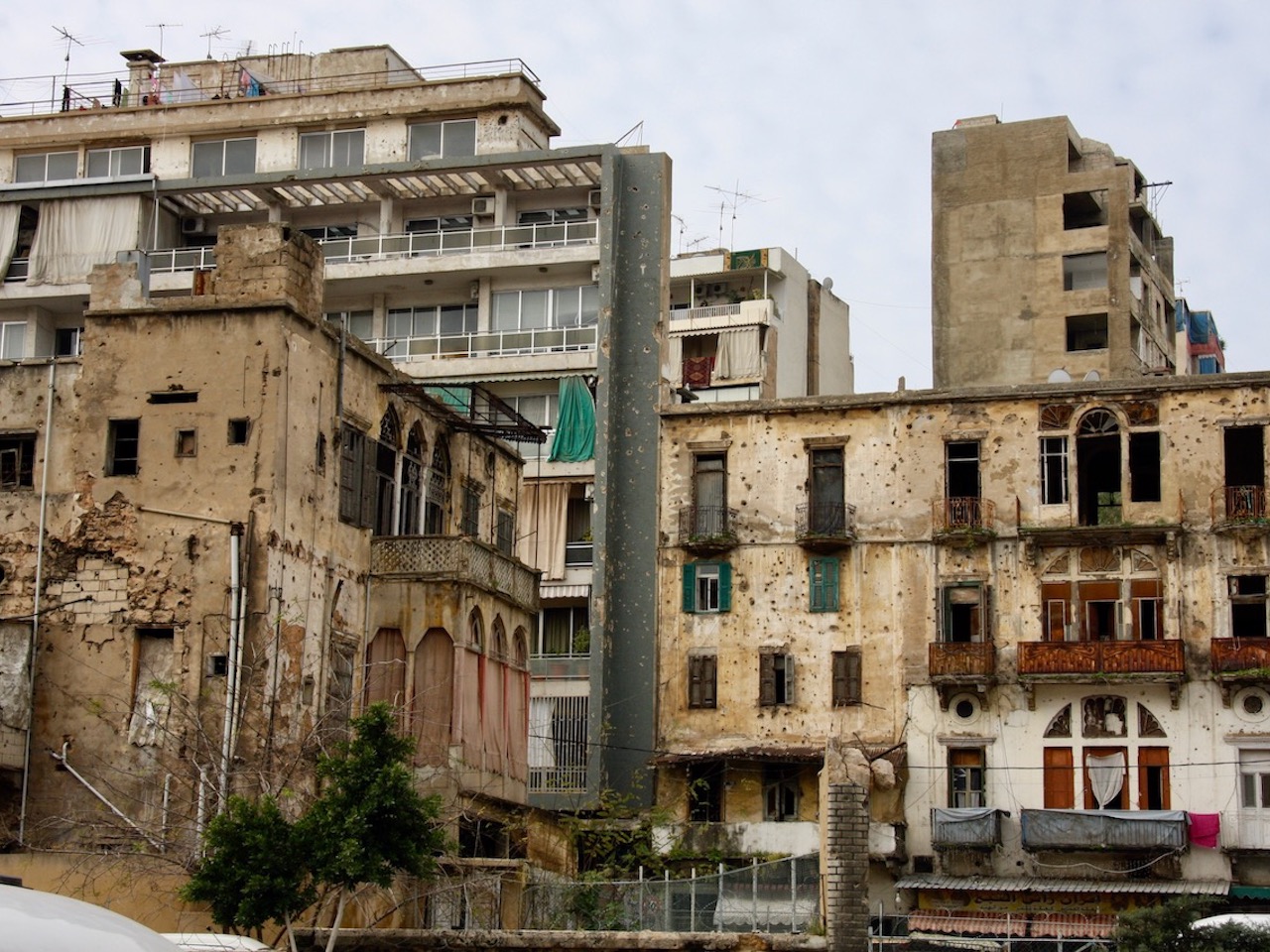
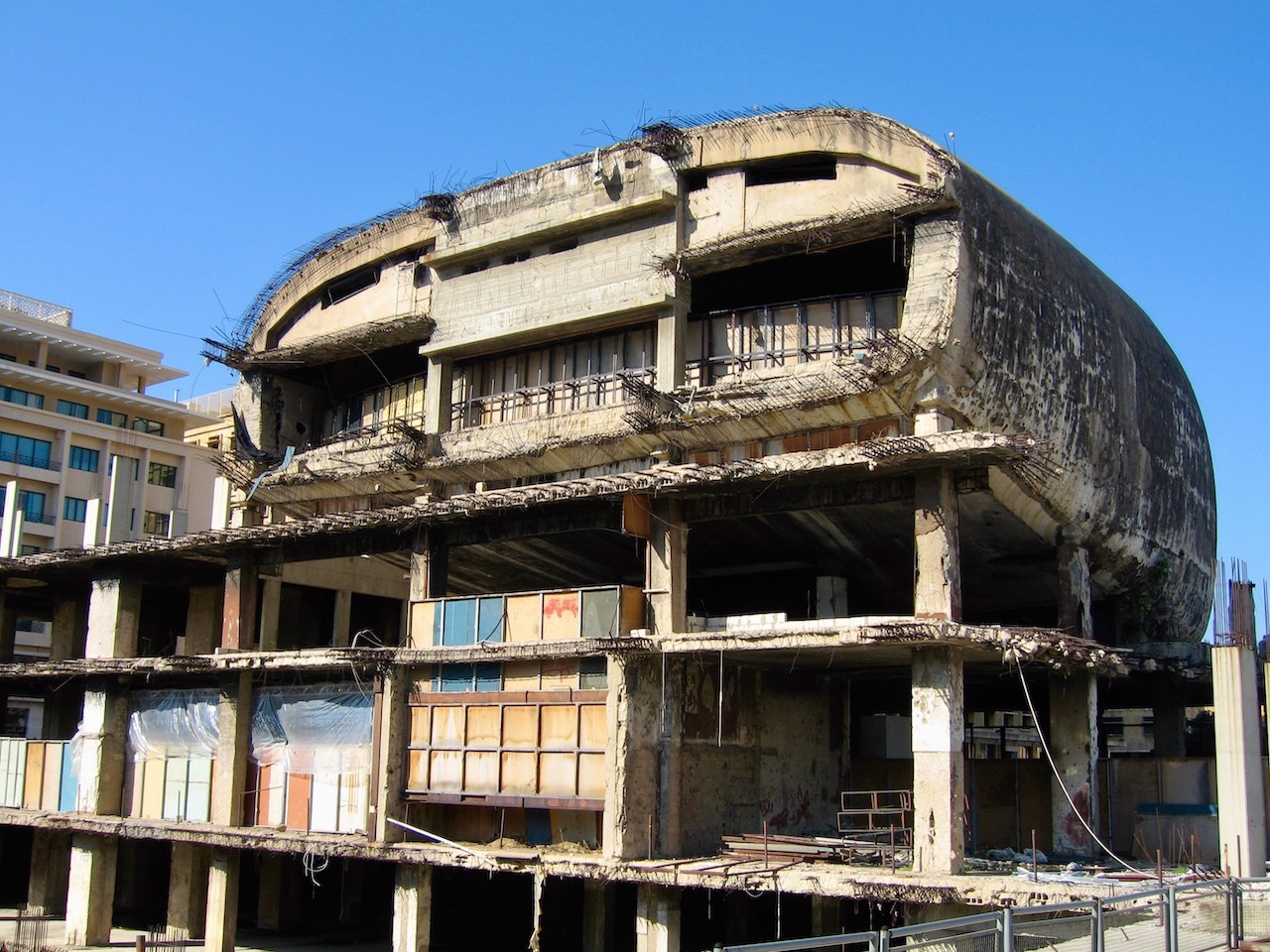

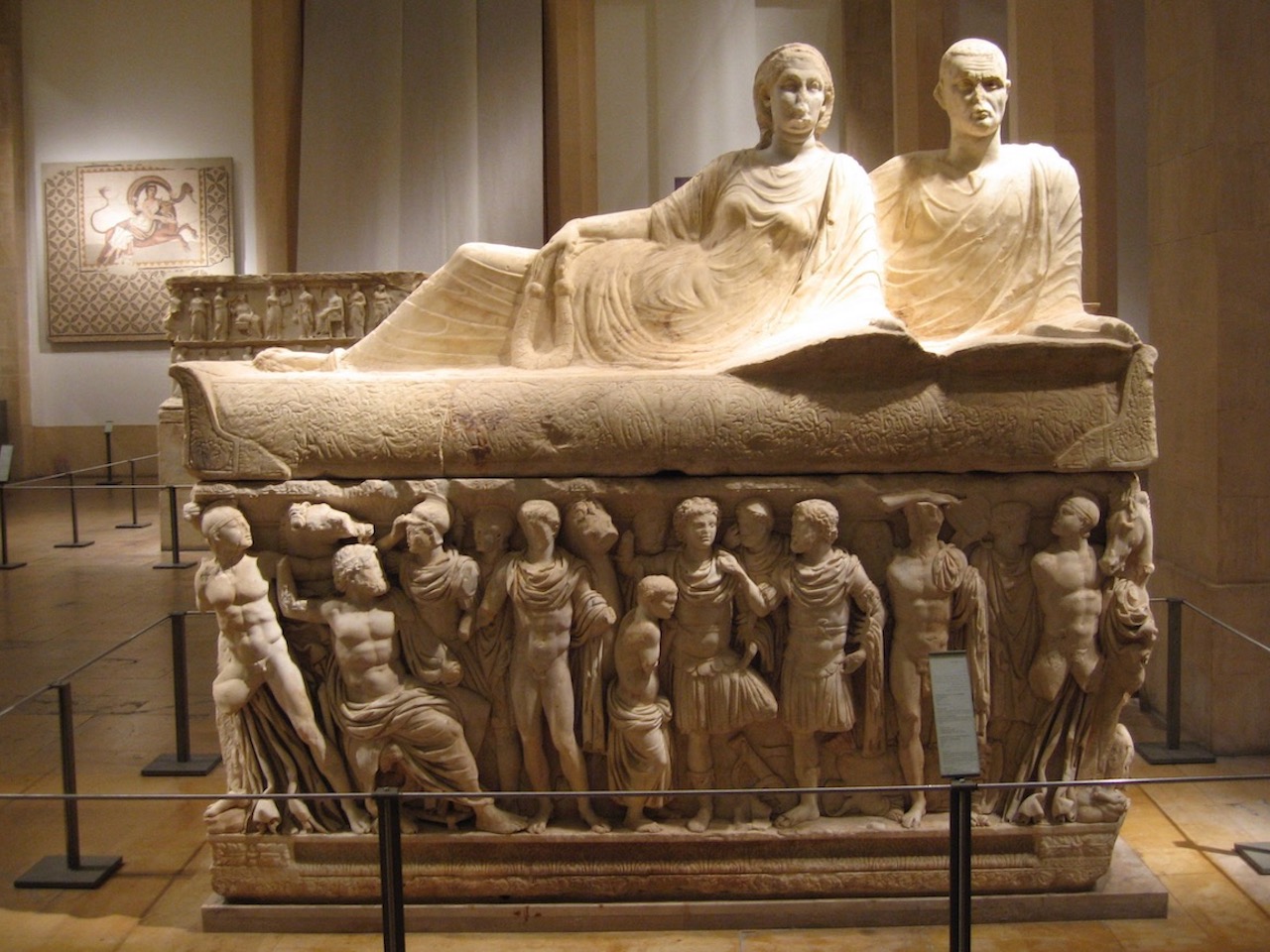

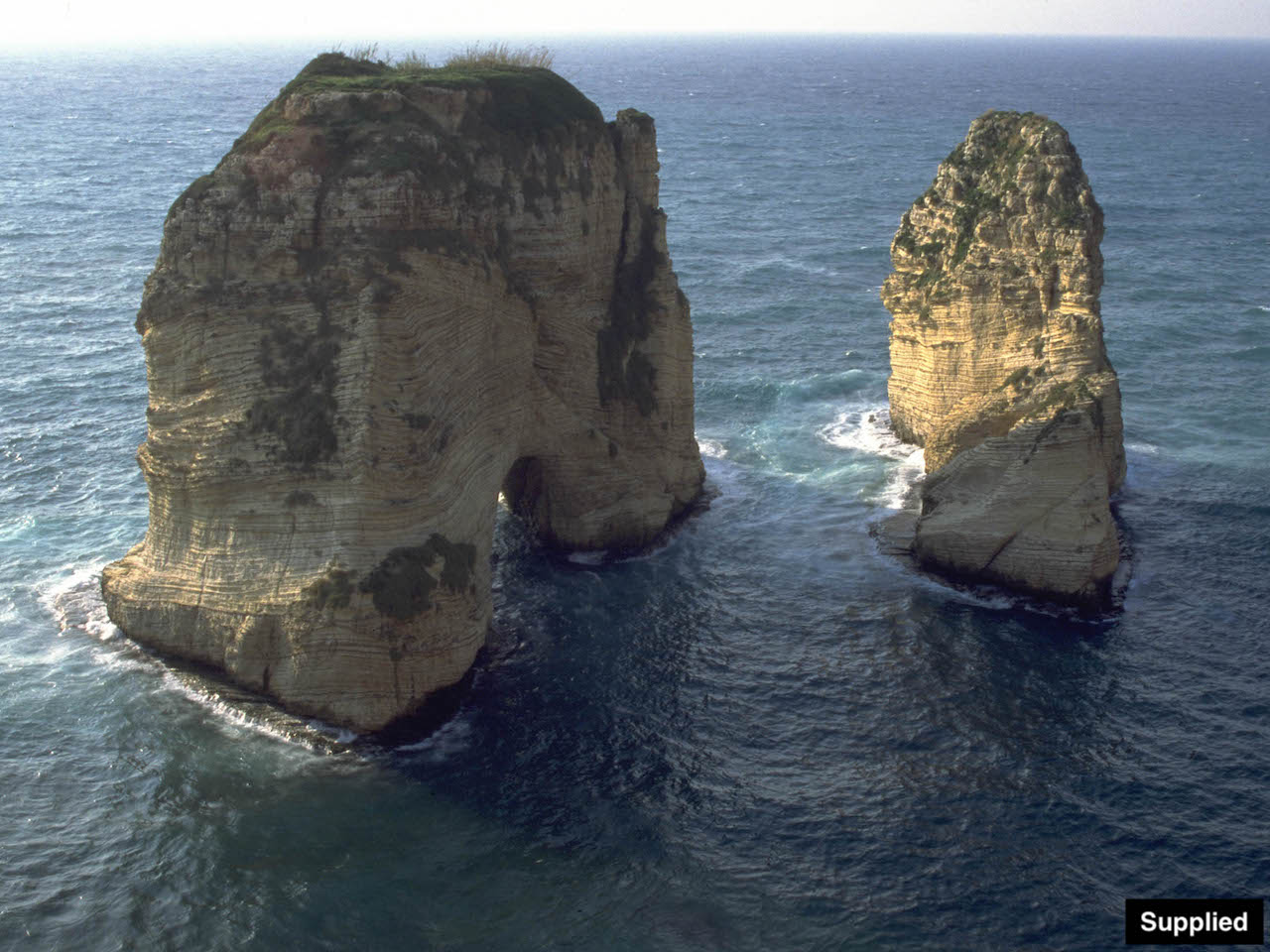


Looking Good, Madam!
 I ALWAYS envied my Lebanese colleagues and friends for their “easy” glamour. So, of course, when we visited Beirut I had to visit a beauty salon – just to see what they’d do to me. I had a haircut and colour, and then left it to the beautician to choose a nail polish for me. She threw in an eyebrow shape and lipstick, blatantly feeling I shouldn’t be seen in daylight without either. The photo shows the results. I got back to our hotel and a lady on reception told me: “Now you look like one of us,” which had us both rolling around with laughter.
I ALWAYS envied my Lebanese colleagues and friends for their “easy” glamour. So, of course, when we visited Beirut I had to visit a beauty salon – just to see what they’d do to me. I had a haircut and colour, and then left it to the beautician to choose a nail polish for me. She threw in an eyebrow shape and lipstick, blatantly feeling I shouldn’t be seen in daylight without either. The photo shows the results. I got back to our hotel and a lady on reception told me: “Now you look like one of us,” which had us both rolling around with laughter.
– Sue Brattle
MORE INFO
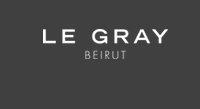 LE GRAY BEIRUT’S website is as stylishly designed as the hotel, and includes a useful destination guide to the city. READ MORE
LE GRAY BEIRUT’S website is as stylishly designed as the hotel, and includes a useful destination guide to the city. READ MORE
RECOMMENDED
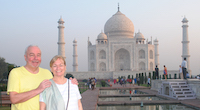 WELCOME TO OUR WORLD! Afaranwide’s home page – this is where you can find out about our latest posts and other highlights. READ MORE
WELCOME TO OUR WORLD! Afaranwide’s home page – this is where you can find out about our latest posts and other highlights. READ MORE
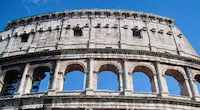 TOP 10 VIRTUAL ATTRACTIONS: Many of the world’s most popular tourists sites are closed because of the coronavirus crisis, but you can still visit them virtually while you’re self-isolating. READ MORE
TOP 10 VIRTUAL ATTRACTIONS: Many of the world’s most popular tourists sites are closed because of the coronavirus crisis, but you can still visit them virtually while you’re self-isolating. READ MORE
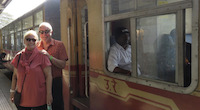 SHIMLA, QUEEN OF THE HILLS: Government officials once retreated to Shimla in the foothills of the Himalayas to escape India’s blazing hot summers. Now tourists make the same journey. READ MORE
SHIMLA, QUEEN OF THE HILLS: Government officials once retreated to Shimla in the foothills of the Himalayas to escape India’s blazing hot summers. Now tourists make the same journey. READ MORE
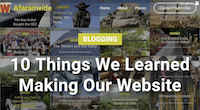 TEN THINGS WE LEARNED: Our up-to-the-minute guide to creating a website, one step at a time. The costs, the mistakes – it’s what we wish we’d known when we started blogging. READ MORE
TEN THINGS WE LEARNED: Our up-to-the-minute guide to creating a website, one step at a time. The costs, the mistakes – it’s what we wish we’d known when we started blogging. READ MORE
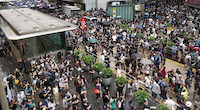 TROUBLED TIMES FOR EXPATS: Moving abroad can seem an idyllic prospect, but what happens when sudden upheavals or the inescapable realities of life intrude? READ MORE
TROUBLED TIMES FOR EXPATS: Moving abroad can seem an idyllic prospect, but what happens when sudden upheavals or the inescapable realities of life intrude? READ MORE
LET'S KEEP IN TOUCH!
A Visit to Beirut
AUGUST 2020 UPDATE: THIS post is based on a visit to Beirut that Afaranwide made some time ago, and was written before the blast that devastated the city in August 2020. We offer our condolences to everyone affected, and our hearts go out to all the people of Lebanon.

COLIN SIMPSON
YOU have to feel really sorry for the people of Lebanon. After decades of conflict – including a bloody 15-year civil war – incursions, invasions and assassinations, the country has once more been plunged into turmoil.
This time there’s an economic crisis, with half the population facing poverty after a dramatic fall in the value of the currency, the pound. The coronavirus has made things worse, though there were warning signals before it emerged. Unemployment stood at 25 percent, and the level of debt compared with gross domestic product was the third highest in the world. Political turmoil and street protests late last year led to the resignation of the government. The new government defaulted on foreign debt, a first for Lebanon. And the country ranks poorly in a measure of perceived corruption.
All this is so tragic since, given a fair wind, the capital Beirut could again be one of the world’s most glamorous and attractive cities, as it was in its 1960s jet-set heyday. Ironically, given that Lebanon is currently peering over an economic abyss, it was known back then as the Switzerland of the Middle East because of its financial clout.
In the intervening years there have been a few times when it looked as if it was on the up again, but sadly they all turned out to be false dawns. In another bitter irony – in view of recent events – Beirut features in the Rough Guide to the 100 Best Places on Earth 2020.

A while ago we visited Beirut during one of the more optimistic periods. And while there were constant reminders of the violent and tragic past, we were entranced by the city and its resilient, upbeat people.
We went there as guests of Le Gray hotel, itself a symbol of the hopeful mood that prevailed at the time. The swish boutique hotel in the Beirut Central District had been opened by a British businessman who already ran swanky properties in central London and Antigua. Given everything that Beirut had been through, the investment seemed a remarkable leap of faith.
The hotel was discreetly luxurious and tastefully decorated, with lots of art hanging from the walls. There were fabulous views across the city from the sides of the rooftop infinity pool.
We saw further signs of urban renewal as we walked around the downtown area, the heart of a massive restoration scheme being carried out by the Solidere company. Ottoman and art deco buildings that were devastated during the civil war had been brought back to life, and grand new properties were being developed. Continuing concerns about Lebanon’s stability meant security was tight.
Attractions in downtown include restored Roman baths and the Mohammed Al Amin Mosque – like the Blue Mosque in Istanbul, only smaller.
Reminders of the troubled past were everywhere. There were bullets holes in walls, shell-blasted buildings, and a statue near the spot where former prime minister Rafic Hariri (the driving force behind the Solidere rejuvenation) was assassinated in 2005.
One striking relic of the turbulent past was a statue in Martyrs’ Square, built as a memorial to nationalists who were massacred during the First World War.
The statue was riddled with bullets during the civil war and an arm of one of the figures was blown off, and it had been left in this state as a reminder of the conflict.
Another grim reminder was the looming, empty ruin of the Holiday Inn, a focus of intensive fighting in both the civil war and the 1982 Lebanon War. Massive blast-holes scarred its walls. An unfinished cinema complex known as the Egg or the Dome is another relic from the war years.
We wanted to find out more about Lebanon’s earlier history, so we stopped off at the National Museum. It’s packed with expertly presented artefacts dating back thousands of years. I particularly liked the Roman exhibits from the port city of Byblos – a superbly crafted statue of a figure in armour from the time of the Emperor Hadrian, for example, and two sarcophaguses that are plain apart from carved likenesses of the original occupants’ heads and faces.
After our dose of culture we wanted to take a break. Cafés in stylish Place de l’Etoile are great for sitting with a coffee and watching the city’s impeccably dressed and groomed residents go by. And there are numerous good-to-great restaurants.
If you fancy a spot of shopping, then there are a number of malls to choose from. We particularly liked the sprawling Beirut Souks development, which made a nice change from the usual malls you find across the Middle East. You walk from shop to shop outdoors rather than in an air-conditioned cocoon.
For a complete contrast to the chain stores in the Beirut Souks and elsewhere, we took a short taxi ride to Saifi Village, an area known for its one-off fashion stores, shoe shops and chic art galleries.
Downtown is impressive but some feel it’s a bit over-sanitised. So for a taste of the “real” Beirut, we headed away from the spruced-up centre and stroll through ordinary streets to see how the people of Beirut lived.
We first visited the east of the city, and then in West Beirut we dived into the backstreets and strolled through the university districts of Hamra and Ras Beirut. Later we enjoyed a promenade along the Corniche – a favourite pastime of the locals – and rounded things off with another coffee, this time at the cliff-top Bay Rock Café overlooking Pigeon Rocks. These two monumental rocks jut up from the sea and erosion has turned one of them into an arch.
Beirut is famous for its nightlife, and one of several hot destinations is Rue Gouraud in the Gemmayzeh district. This long street leads away from Downtown and is lined with attractively aged buildings that provide an appealing contrast to those in the pristine rebuilt centre.
By day, Rue Gouraud is quiet and has the air of a place that’s sleeping off a particularly heavy night, with few signs of activity other than some cafés and shops.
But after dark it springs into life, transforming itself into party central as a host of restaurants and nightspots throw open their doors. The action starts to get going after 9pm.
Our overwhelming impression was that Beirut, despite everything, was a place determined to get on with life. Let’s hope it soon overcomes its current challenges.
As for Le Gray, it underwent a major refurbishment in 2017, eight years after it opened. It now has an exhibition venue, 52-seat cinema, new lobby lounge, 16 extra guest rooms and business and events facilities.
The hotel, which has won a raft of awards and is listed as one of the top 25 hotels in the Middle East, has stayed open during the coronavirus crisis but closed its doors in February this year when protests flared around a confidence hearing into the newly-formed government. Le Gray is in Martyrs’ Square where the protest was staged.
Additional reporting by Sue Brattle.
Top photo: Beirut at night (supplied).
April 2020











Looking Good, Madam!
 I ALWAYS envied my Lebanese colleagues and friends for their “easy” glamour. So, of course, when we visited Beirut I had to visit a beauty salon – just to see what they’d do to me. I had a haircut and colour, and then left it to the beautician to choose a nail polish for me. She threw in an eyebrow shape and lipstick, blatantly feeling I shouldn’t be seen in daylight without either. The photo shows the results. I got back to our hotel and a lady on reception told me: “Now you look like one of us,” which had us both rolling around with laughter.
I ALWAYS envied my Lebanese colleagues and friends for their “easy” glamour. So, of course, when we visited Beirut I had to visit a beauty salon – just to see what they’d do to me. I had a haircut and colour, and then left it to the beautician to choose a nail polish for me. She threw in an eyebrow shape and lipstick, blatantly feeling I shouldn’t be seen in daylight without either. The photo shows the results. I got back to our hotel and a lady on reception told me: “Now you look like one of us,” which had us both rolling around with laughter.
– Sue Brattle
MORE INFO
 LE GRAY BEIRUT’S website is as stylishly designed as the hotel, and includes a useful destination guide to the city. READ MORE
LE GRAY BEIRUT’S website is as stylishly designed as the hotel, and includes a useful destination guide to the city. READ MORE
RECOMMENDED
 WELCOME TO OUR WORLD! Afaranwide’s home page – this is where you can find out about our latest posts and other highlights. READ MORE
WELCOME TO OUR WORLD! Afaranwide’s home page – this is where you can find out about our latest posts and other highlights. READ MORE
 TOP 10 VIRTUAL ATTRACTIONS: Many of the world’s most popular tourists sites are closed because of the coronavirus crisis, but you can still visit them virtually while you’re self-isolating. READ MORE
TOP 10 VIRTUAL ATTRACTIONS: Many of the world’s most popular tourists sites are closed because of the coronavirus crisis, but you can still visit them virtually while you’re self-isolating. READ MORE
 SHIMLA, QUEEN OF THE HILLS: Government officials once retreated to Shimla in the foothills of the Himalayas to escape India’s blazing hot summers. Now tourists make the same journey. READ MORE
SHIMLA, QUEEN OF THE HILLS: Government officials once retreated to Shimla in the foothills of the Himalayas to escape India’s blazing hot summers. Now tourists make the same journey. READ MORE
 TEN THINGS WE LEARNED: Our up-to-the-minute guide to creating a website, one step at a time. The costs, the mistakes – it’s what we wish we’d known when we started blogging. READ MORE
TEN THINGS WE LEARNED: Our up-to-the-minute guide to creating a website, one step at a time. The costs, the mistakes – it’s what we wish we’d known when we started blogging. READ MORE
 TROUBLED TIMES FOR EXPATS: Moving abroad can seem an idyllic prospect, but what happens when sudden upheavals or the inescapable realities of life intrude? READ MORE
TROUBLED TIMES FOR EXPATS: Moving abroad can seem an idyllic prospect, but what happens when sudden upheavals or the inescapable realities of life intrude? READ MORE
LET'S KEEP IN TOUCH!
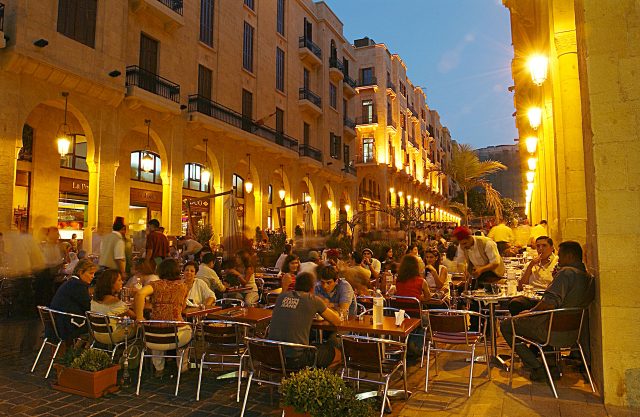
AUGUST 2020 UPDATE: THIS post is based on a visit to Beirut that Afaranwide made some time ago, and was written before the blast that devastated the city in August 2020. We offer our condolences to everyone affected, and our hearts go out to all the people of Lebanon.
A Visit to Beirut

COLIN SIMPSON
YOU have to feel really sorry for the people of Lebanon. After decades of conflict – including a bloody 15-year civil war – incursions, invasions and assassinations, the country has once more been plunged into turmoil.
This time there’s an economic crisis, with half the population facing poverty after a dramatic fall in the value of the currency, the pound. The coronavirus has made things worse, though there were warning signals before it emerged. Unemployment stood at 25 percent, and the level of debt compared with gross domestic product was the third highest in the world.
Political turmoil and street protests late last year led to the resignation of the government. The new government defaulted on foreign debt, a first for Lebanon. And the country ranks poorly in a measure of perceived corruption.
All this is so tragic since, given a fair wind, the capital Beirut could again be one of the world’s most glamorous and attractive cities, as it was in its 1960s jet-set heyday.
Ironically, given that Lebanon is currently peering over an economic abyss, it was known back then as the Switzerland of the Middle East because of its financial clout.
In the intervening years there have been a few times when it looked as if it was on the up again, but sadly they all turned out to be false dawns. In another bitter irony – in view of recent events – Beirut features in the Rough Guide to the 100 Best Places on Earth 2020.
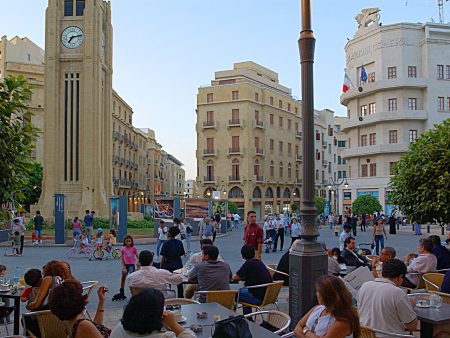
A while ago we visited Beirut during one of the more optimistic periods. And while there were constant reminders of the violent and tragic past, we were entranced by the city and its resilient, upbeat people.
We went there as guests of Le Gray hotel, itself a symbol of the hopeful mood that prevailed at the time. The swish boutique hotel in the Beirut Central District had been opened by a British businessman who already ran swanky properties in central London and Antigua. Given everything that Beirut had been through, the investment seemed a remarkable leap of faith.
The hotel was discreetly luxurious and tastefully decorated, with lots of art hanging from the walls. There were fabulous views across the city from the sides of the rooftop infinity pool.
We saw further signs of urban renewal as we walked around the downtown area, the heart of a massive restoration scheme being carried out by the Solidere company. Ottoman and art deco buildings that were devastated during the civil war had been brought back to life, and grand new properties were being developed. Continuing concerns about Lebanon’s stability meant security was tight.
Attractions in downtown include restored Roman baths and the Mohammed Al Amin Mosque – like the Blue Mosque in Istanbul, only smaller.
Reminders of the troubled past were everywhere. There were bullets holes in walls, shell-blasted buildings, and a statue near the spot where former prime minister Rafic Hariri (the driving force behind the Solidere rejuvenation) was assassinated in 2005.
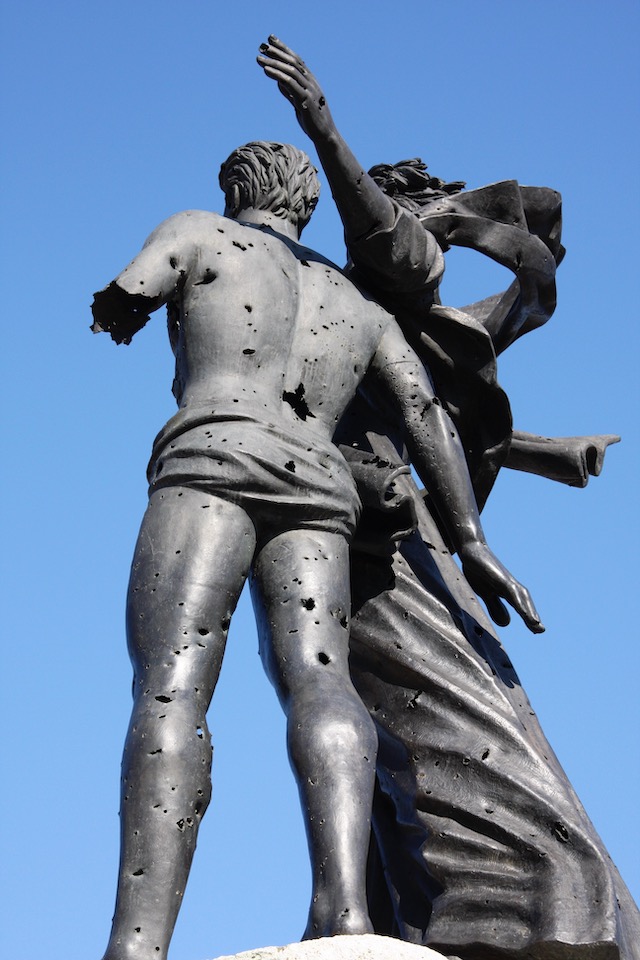
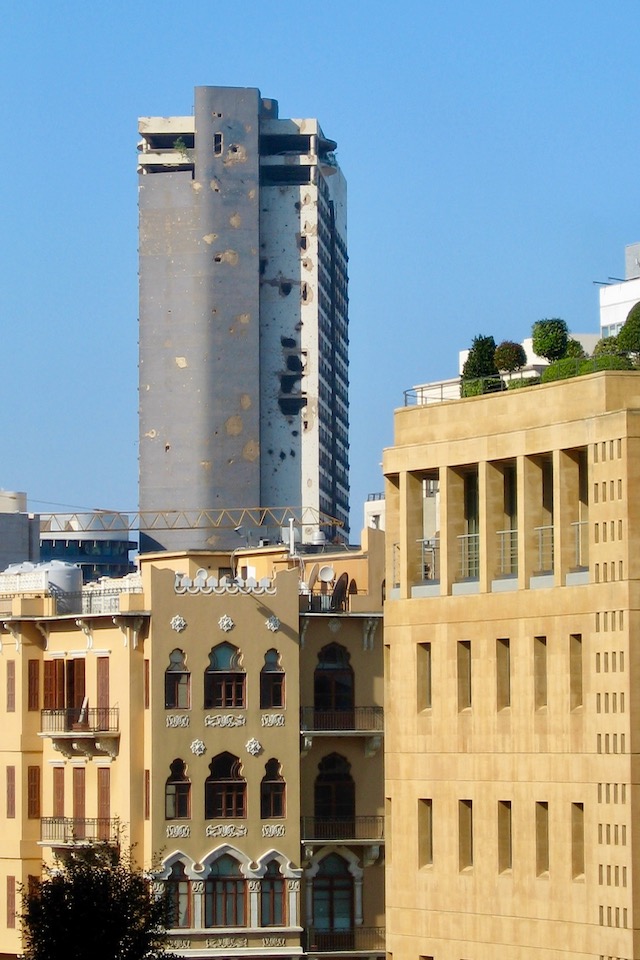
One striking relic of the turbulent past was a statue in Martyrs’ Square, built as a memorial to nationalists who were massacred during the First World War.
The statue was riddled with bullets during the civil war and an arm of one of the figures was blown off, and it had been left in this state as a reminder of the conflict.
Another grim reminder was the looming, empty ruin of the Holiday Inn, a focus of intensive fighting in both the civil war and the 1982 Lebanon War. Massive blast-holes scarred its walls. An unfinished cinema complex known as the Egg or the Dome is another relic from the war years.
We wanted to find out more about Lebanon’s earlier history, so we stopped off at the National Museum. It’s packed with expertly presented artefacts dating back thousands of years. I particularly liked the Roman exhibits from the port city of Byblos – a superbly crafted statue of a figure in armour from the time of the Emperor Hadrian, for example, and two sarcophaguses that are plain apart from carved likenesses of the original occupants’ heads and faces.
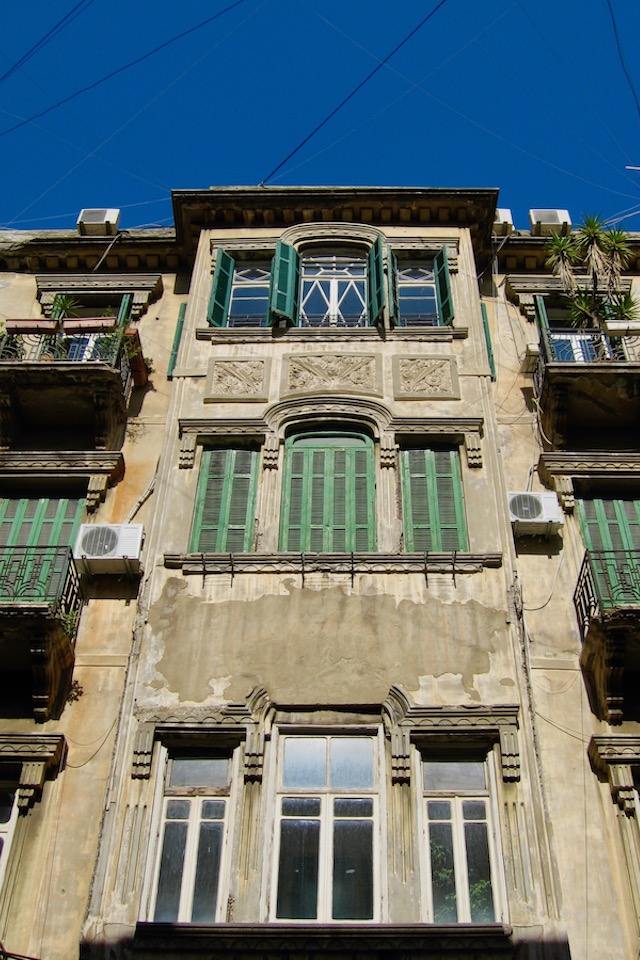

After our dose of culture we wanted to take a break. Cafés in stylish Place de l’Etoile are great for sitting with a coffee and watching the city’s impeccably dressed and groomed residents go by. And there are numerous good-to-great restaurants.
If you fancy a spot of shopping, then there are a number of malls to choose from. We particularly liked the sprawling Beirut Souks development, which made a nice change from the usual malls you find across the Middle East. You walk from shop to shop outdoors rather than in an air-conditioned cocoon.
For a complete contrast to the chain stores in the Beirut Souks and elsewhere, we took a short taxi ride to Saifi Village, an area known for its one-off fashion stores, shoe shops and chic art galleries.
Downtown is impressive but some feel it’s a bit over-sanitised. So for a taste of the “real” Beirut, we headed away from the spruced-up centre and stroll through ordinary streets to see how the people of Beirut lived.
We first visited the east of the city, and then in West Beirut we dived into the backstreets and strolled through the university districts of Hamra and Ras Beirut.
Later we enjoyed a promenade along the Corniche – a favourite pastime of the locals – and rounded things off with another coffee, this time at the cliff-top Bay Rock Café overlooking Pigeon Rocks. These two monumental rocks jut up from the sea and erosion has turned one of them into an arch.
Beirut is famous for its nightlife, and one of several hot destinations is Rue Gouraud in the Gemmayzeh district. This long street leads away from Downtown and is lined with attractively aged buildings that provide an appealing contrast to those in the pristine rebuilt centre.
By day, Rue Gouraud is quiet and has the air of a place that’s sleeping off a particularly heavy night, with few signs of activity other than some cafés and shops.
But after dark it springs into life, transforming itself into party central as a host of restaurants and nightspots throw open their doors. The action starts to get going after 9pm.
Our overwhelming impression was that Beirut, despite everything, was a place determined to get on with life. Let’s hope it soon overcomes its current challenges.
As for Le Gray, it underwent a major refurbishment in 2017, eight years after it opened. It now has an exhibition venue, 52-seat cinema, new lobby lounge, 16 extra guest rooms and business and events facilities.
The hotel, which has won a raft of awards and is listed as one of the top 25 hotels in the Middle East, has stayed open during the coronavirus crisis but closed its doors in February this year when protests flared around a confidence hearing into the newly-formed government. Le Gray is in Martyrs’ Square where the protest was staged.
Additional reporting by Sue Brattle.
Top photo: Beirut at night (supplied).
April 2020











Looking Good, Madam!
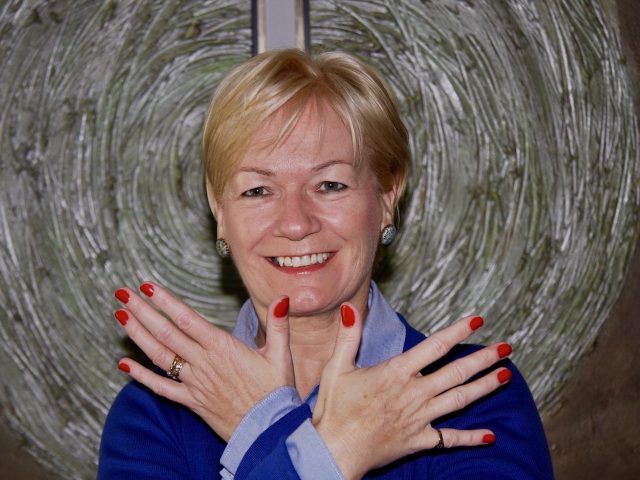
I ALWAYS envied my Lebanese colleagues and friends for their “easy” glamour. So, of course, when we visited Beirut I had to visit a beauty salon – just to see what they’d do to me. I had a haircut and colour, and then left it to the beautician to choose a nail polish for me. She threw in an eyebrow shape and lipstick, blatantly feeling I shouldn’t be seen in daylight without either. The photo shows the results. I got back to our hotel and a lady on reception told me: “Now you look like one of us,” which had us both rolling around with laughter.
– Sue Brattle
MORE INFO
 LE GRAY BEIRUT’S website is as stylishly designed as the hotel, and includes a useful destination guide to the city. READ MORE
LE GRAY BEIRUT’S website is as stylishly designed as the hotel, and includes a useful destination guide to the city. READ MORE
RECOMMENDED
 WELCOME TO OUR WORLD! Afaranwide’s home page – this is where you can find out about our latest posts and other highlights. READ MORE
WELCOME TO OUR WORLD! Afaranwide’s home page – this is where you can find out about our latest posts and other highlights. READ MORE
 TOP 10 VIRTUAL ATTRACTIONS: Many of the world’s most popular tourists sites are closed because of the coronavirus crisis, but you can still visit them virtually while you’re self-isolating. READ MORE
TOP 10 VIRTUAL ATTRACTIONS: Many of the world’s most popular tourists sites are closed because of the coronavirus crisis, but you can still visit them virtually while you’re self-isolating. READ MORE
 SHIMLA, QUEEN OF THE HILLS: Government officials once retreated to Shimla in the foothills of the Himalayas to escape India’s blazing hot summers. Now tourists make the same journey. READ MORE
SHIMLA, QUEEN OF THE HILLS: Government officials once retreated to Shimla in the foothills of the Himalayas to escape India’s blazing hot summers. Now tourists make the same journey. READ MORE
 TEN THINGS WE LEARNED: Our up-to-the-minute guide to creating a website, one step at a time. The costs, the mistakes – it’s what we wish we’d known when we started blogging. READ MORE
TEN THINGS WE LEARNED: Our up-to-the-minute guide to creating a website, one step at a time. The costs, the mistakes – it’s what we wish we’d known when we started blogging. READ MORE
 TROUBLED TIMES FOR EXPATS: Moving abroad can seem an idyllic prospect, but what happens when sudden upheavals or the inescapable realities of life intrude? READ MORE
TROUBLED TIMES FOR EXPATS: Moving abroad can seem an idyllic prospect, but what happens when sudden upheavals or the inescapable realities of life intrude? READ MORE